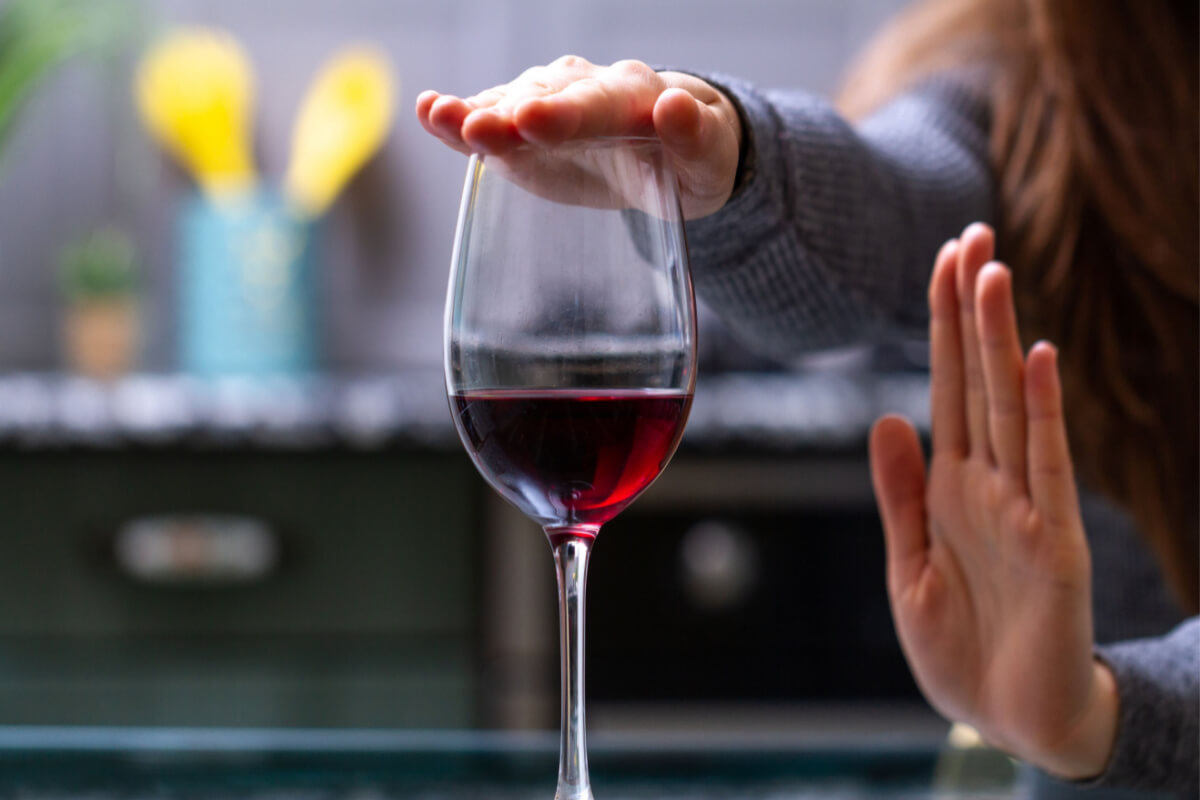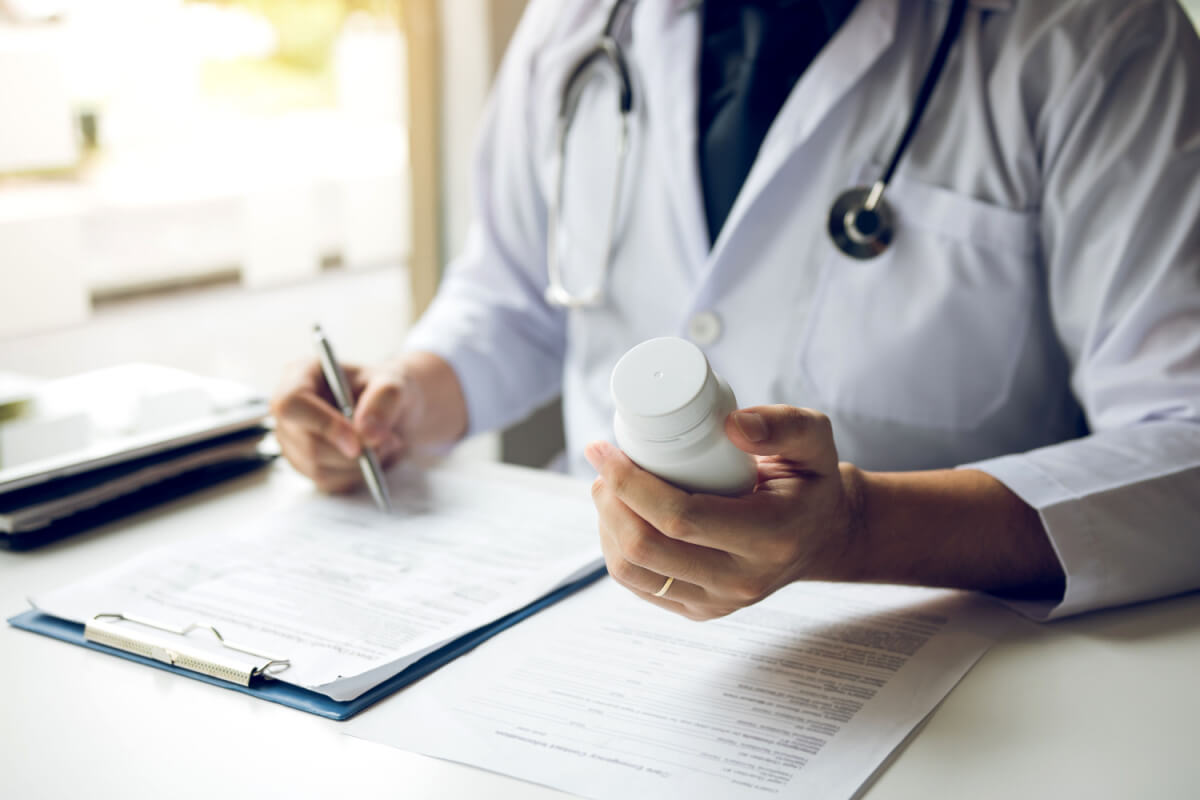
For most people, a willingness to talk to an addiction treatment professional and adherence to an outpatient addiction treatment plan is a good way to start quitting drinking for good. Other people may need a more intense program, such as enrolling in a partial hospitalization program or an inpatient treatment program.
Different Settings To Quit Drinking
There are several different settings in which individuals may choose to quit or cut back on drinking:
1. Going ‘Cold Turkey’
Going “cold turkey” refers to a patient simply stopping drinking on their own without medications or professional psychosocial support. While this may be safe and appropriate for certain individuals, as we’ve discussed in the past, the “cold turkey” approach to alcohol addiction recovery is usually the least successful when we look at population based studies. [3] When we look at studies of hundreds and thousands of individuals, people who go “cold turkey” have the lowest success rates and the highest likelihood of returning to alcohol use long term. In addition, some individuals who have been drinking heavily can experience alcohol withdrawal which can be dangerous and even life threatening. Thus, particularly in patients who have a history of complicated withdrawal symptoms, it is always best to work with a medical professional prior to deciding to stop drinking on your own.
2. Outpatient Treatment
Outpatient treatment is generally the most convenient addiction treatment option, where an individual receives addiction treatments by going to an outpatient office or treatment center at regular intervals – either daily, weekly, or even less often, depending on their needs. [1]
Outpatient treatment ranges in intensity, with the most intensive outpatient programs being shown to more or less be as effective as inpatient treatment for the majority of individuals seeking treatment.[2] Of the evidence-based treatment options, outpatient treatment tends to be the cheapest and least time-intensive option that still has strong support showing that it can greatly improve a person’s chances of managing their addiction. Getting outpatient treatment is also convenient for people who need to continue to work or attend school during treatment.
3. Partial Hospitalization
Partial hospitalization is a treatment option that sits in between outpatient and inpatient treatment. An individual devotes several hours a day for a significant portion of the week to treatment with a provider, but they are still able to spend at least some of their time outside a facility performing other important tasks, notably working or going to school.
This is a good treatment option for people who either can’t afford inpatient treatment or have obligations they can’t move to receive inpatient treatment but still need a more intense treatment program than traditional outpatient options can offer.
4. Inpatient or Residential Treatment
Inpatient or residential treatment is a type of addiction treatment where a person stays at a specialized facility, usually for at least a few weeks, to get targeted addiction care. These treatment programs allow a person to focus completely on their recovery and can greatly reduce a person’s access to alcohol, making relapse while in this kind of treatment much more difficult.
These programs can be expensive, but they are good for individuals who are in crisis or otherwise dealing with an especially severe addiction. This is ideal for patients who need time in a safe space to build a solid foundation in recovery. After inpatient treatment, they are better able to resist alcohol cravings in everyday life.
Understanding the Effects of Alcohol
Understanding the effects of alcohol is important to understanding the recovery process.[4] Even though it is legal, alcohol is still a powerful drug, with a high level of misuse and addiction potential.
Alcohol use produces pleasurable feelings in the brain. At first, patients use alcohol to experience these pleasurable feelings.
With repeated use, alcohol rewires the brain, changing how reward systems in the brain operate. In essence, a person’s drunk state becomes what the brain considers “normal,” and they begin to experience unpleasant effects when sober, going through withdrawal. Alcohol withdrawal can cause a number of unpleasant physical and mental symptoms, and it can even be life-threatening. At this stage of addiction, patients may need to drink not in order to get drunk but simply to prevent unpleasant withdrawal symptoms. This keeps them in a constant cycle of use.
Creating a Plan to Quit Drinking
When combatting any addiction, it’s important to form a plan. Consider how you can maximize your chances of overcoming an alcohol addiction. This includes asking yourself a number of questions about what type of treatment will work best for you, given your life circumstances, daily responsibilities, personal preferences, severity of your use disorder, your finances, etc.
First, start by thinking about what setting you would like to receive treatment: would you be a good candidate for “going cold turkey”? Or would you prefer the accountability of an outpatient, partial inpatient, or inpatient treatment program?
If you don’t know where to begin, the National Institute on Alcohol Abuse and Alcoholism offers a huge pool of resources through their NIAAA Alcohol Treatment Navigator to help people get information on alcohol and addiction recovery they can trust and to help them find treatment.[5] We also encourage you to explore our site and see if we can help in your recovery.
What Does the Evidence Say About How To Maximize Your Success?
There are a few key facts to know about people who have the best success in recovery:
1. Consider Utilizing medications for alcohol treatment (MAT)
Medication can play an important role in alcohol treatment [6] The FDA has approved several medications for alcohol use disorder, including Naltrexone, Acamprosate, and Disulfiram. In addition, certain medications like Topiramate and Gabapentin are sometimes used off label to help people with alcohol use disorder.
2. Utilize behavioral therapy
It is possible that some people may need medication alone to sustain recovery from alcohol use. However, for most people, use of medication in conjunction with therapy has the highest success rates.
Cognitive behavioral therapy (CBT) is the first line treatment option for addiction. CBT is a particular type of therapy that has a heavy focus on helping to identify your thoughts and emotions and how to change the actions you take (drinking) in response to those thoughts and emotions.
CBT works particularly well for patients with AUD, but not for everyone. There are a plethora of different types of therapy available, including group therapy, alcoholics anonymous/peer support programs, psychotherapy, etc. If you have tried one type of therapy without much success, there are many others to try that might work better for you. Don’t give up after trying just one type of therapy or therapist.
3. Build A Social Support Network
A strong support network can often help to reduce a person’s chance of relapse and improve their adherence to their recommended addiction treatments.
For many people, family can be a major part of their support network, although it’s still possible to develop a strong network even if you lack a healthy family dynamic. Many people find peer support groups, such as AA, to be helpful for their recovery. In these groups, they get to meet people who have similar struggles and can talk about their problems in a judgment-free zone. The evidence for the benefits of peer support groups is generally positive, although somewhat limited.[7
You can also lean on friends, coworkers, and the team of medical professionals you work with as other forms of support.
Making sure you have good social support in whatever form that may take for you, is key to long term success in reducing or even stopping alcohol use.
Reach out to us at Bicycle health if you have questions about where to start in your recovery.

Medically Reviewed By Elena Hill, MD, MPH
Elena Hill, MD; MPH received her MD and Masters of Public Health degrees at Tufts Medical School and completed her family medicine residency at Boston Medical Center. She is currently an attending physician at Bronxcare Health Systems in the Bronx, NY where ... Read More
- Treatment for Alcohol Problems: Finding and Getting Help. National Institute on Alcohol Abuse and Alcoholism. https://www.niaaa.nih.gov/publications/brochures-and-fact-sheets/treatment-alcohol-problems-finding-and-getting-help. August 2021. Accessed October 2022.
- Substance Abuse Intensive Outpatient Programs: Assessing the Evidence. Psychiatric Services. https://www.ncbi.nlm.nih.gov/pmc/articles/PMC4152944/. June 2014. Accessed October 2022.
- The Dangers of Quitting Alcohol “Cold Turkey”. Bicycle Health. https://www.bicyclehealth.com/blog/dangers-of-quitting-alcohol-cold-turkey. September 2022. Accessed October 2022.
- The Cycle of Alcohol Addiction. National Institute on Alcohol Abuse and Alcoholism. https://www.niaaa.nih.gov/publications/cycle-alcohol-addiction. 2021. Accessed October 2022.
- NIAAA Alcohol Treatment Navigator. National Institute on Alcohol Abuse and Alcoholism. https://alcoholtreatment.niaaa.nih.gov/?_gl=1*1gj6s8t*_ga*ODgwNTIwODQuMTY0ODc1ODY5Ng..*_ga_E2D8B2PVE9*MTY2NDkxNTA2Ny4yMi4xLjE2NjQ5MTU2MTkuMC4wLjA. Accessed October 2022.
- Alcohol Use Disorder (AUD) Treatment. National Library of Medicine. https://medlineplus.gov/alcoholusedisorderaudtreatment.html. September 2017. Accessed October 2022.
- Benefits of Peer Support Groups in the Treatment of Addiction. Substance Abuse and Rehabilitation. https://www.ncbi.nlm.nih.gov/pmc/articles/PMC5047716/. September 2016. Accessed October 2022.
Download Our Free Program Guide
Learn about our program, its effectiveness and what to expect
Related articles
Imagine what’s possible on the other side of opioid use disorder.
Our science-backed approach boasts 95% of patients reporting no withdrawal symptoms at 7 days. We can help you achieve easier days and a happier future.









